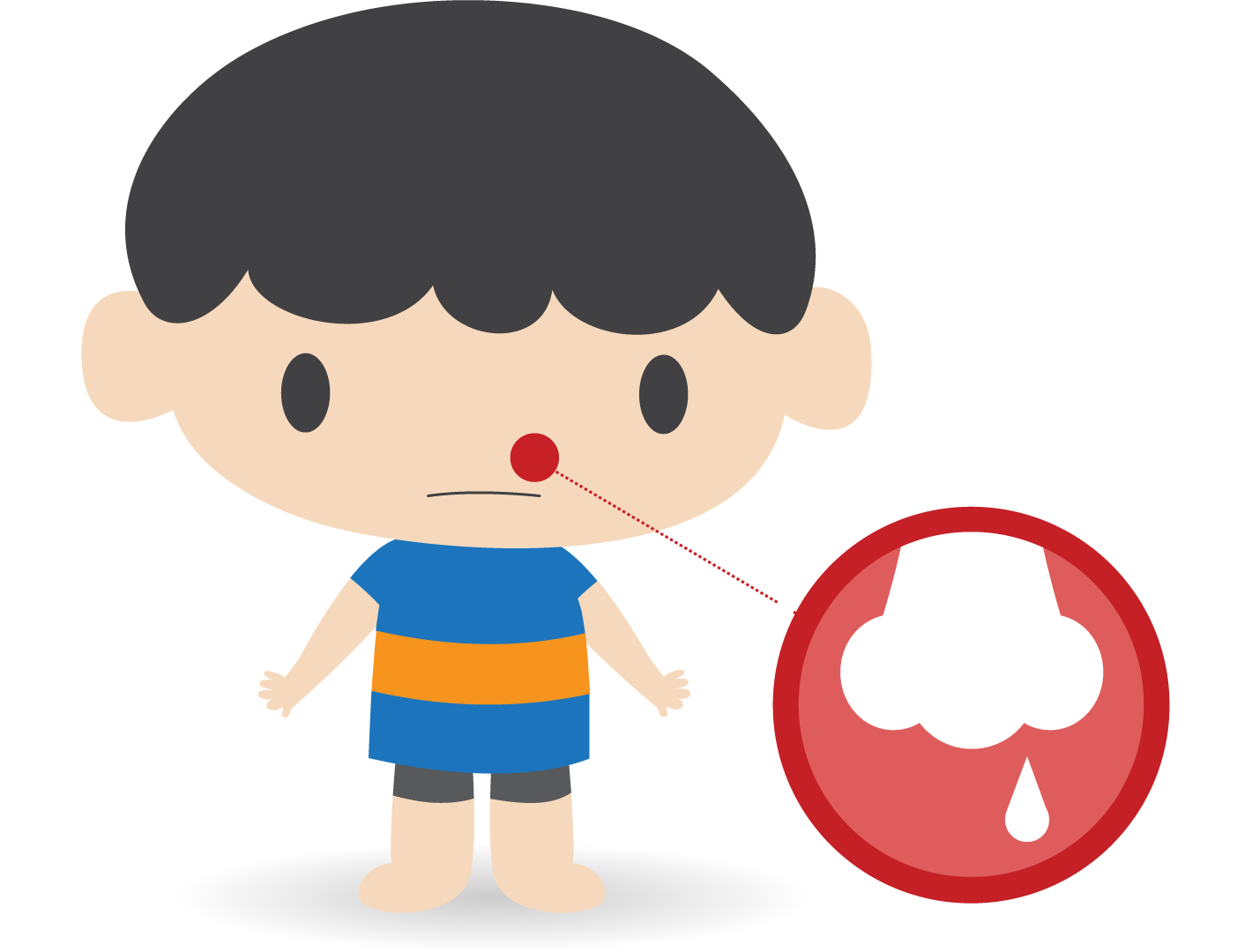
Print / Download Handout: English | French | Arabic | Punjabi
The nasal septum is the thin wall between the two nostrils. It has lots of sensitive blood vessels and can bleed very easily. A nosebleed happens when the septum is dry, picked at or injured. Nosebleeds in children are quite common and usually not serious.
The most common causes of nosebleeds include:
Other, less common causes of nosebleeds include:
Nosebleeds usually occur suddenly either after any direct injury to the nose or while children are sleeping.
While they can appear frightening, they are typically not painful and the bleeding is only from the front part of the nose.
Sometimes children will swallow some blood that can irritate their stomach - if they vomit they may have a small amount of red/brown blood in their vomit.
If your child has frequent nosebleeds AND symptoms like easy bruising, gum bleeding, looking pale or being more tired than usual they should be seen by a doctor.
How can you help your child if they have a nosebleed?
When a child has a nosebleed it often looks like a lot of blood, but most nosebleeds are not life threatening. You can easily treat most nosebleeds at home by following these steps:
If your child’s nosebleed lasts more than 20 to 30 minutes, they should see a doctor. The doctor can look for where the bleeding is coming from. Doctors can perform nasal packing to help manage the nosebleed. Nasal packing is where gauze-like material is put in the nose to help put pressure on the blood vessels and control the bleeding. Packing is usually left in place for 24 to 48 hours and removed by a doctor.
If your child has repeated nosebleeds, they may be referred to an ENT (Ear Nose and Throat) specialist to look in their nose and recommend different treatments to help control the problem.

 It can be scary when your child is sick. But in most cases, you don’t need to go to the emergency
department. If you’re unsure, we’re
here to help.
It can be scary when your child is sick. But in most cases, you don’t need to go to the emergency
department. If you’re unsure, we’re
here to help.
The content provided on these pages is not intended to replace medical advice. If you have concerns about the health of your child, contact your health care provider directly. If your child has an emergency, go to the nearest emergency department or call 911. Alberta Health Services and Project HEAL strive to ensure that all material is correct but will not be held liable for errors or incomplete information contained in these pages.